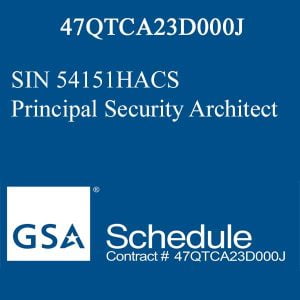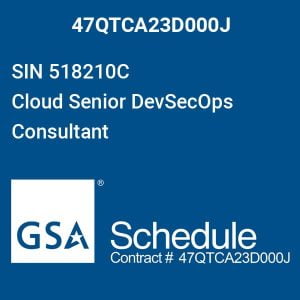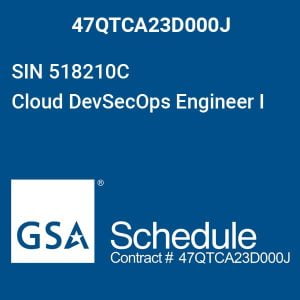What are the AWS Architecture Best Practices? Cloud computing technology architecture has been rocketing in recent years with the expansion of on-demand cloud computing platforms such as AWS. Amazon Web Services is a pioneer in transforming the cloud-enabled world in which we live to a cloud-native world with its many managed cloud computing services and infrastructure.
A good cloud architecture, be it on AWS infrastructure or not, should reflect performance efficiency, cost optimization, security, reliability, and should stand for operational excellence.
In this article, you will learn about a few AWS best practices that will help you build an application in the cloud incorporating the above success notes.
Unlock the future of intelligent applications with our cutting-edge Generative AI integration services!
Design for Failure with AWS Architecture Best Practices
Do you feel optimistic and safe (on the principle of in-built redundancy in the cloud) when you are designing cloud architectures? But in reality, never mind whether it is cloud or not, you should always design, build, and deploy for automated recovery from software and hardware failures. The following strategies would help to design for failure on AWS microservices infrastructure.
- Use Elastic IPs: dynamically remappable static IPs, to quickly remap and route the traffic to a new set of servers upon failover. You can use elastic IPs mainly when upgrading versions or when hardware failure.
- Deploy your architecture to multiple AWS availability zones to ensure high availability. You can use Amazon RDS Multi-AZ deployments to automatically provide synchronous standby replicas in multiple availability zones. This feature is usable at planned system maintenance, DB instance failure, and availability zone disruption. At the same time, you can configure Amazon RDS to perform automated backups. Multiple DB slaves setup and hot replications can also ensure high availability of DB instances.
- Setup the CloudWatch granularity metrics to get more visibility to Auto Scaling groups. So CloudWatch can quickly identify and replace unhealthy Amazon EC2 instances.
- Use Amazon Machine Images to launch multiple instances for cloning and restoring environments to different availability zones easily.
Build for Scalability with AWS Architecture Best Practices
Elasticity and scalability are inherent characteristics of cloud computing. However, if your architecture is not scalable, you will not be able to embed the scalability of the cloud infrastructure into your design.
Scalability could achieve in two folds in cloud architectures: vertical scalability and horizontal scalability. As a design principle, ensure that you implement vertical scaling for short-term purposed AWS cloud architectures. Whereas, apply horizontal scalability for building internet-scale applications, distributing workloads to multiple resources.
But distributing workload is not as easy as on the paper. So, it will be helpful to know when to engage stateless applications, stateless components, and stateful applications into your architecture.
-
 GSA SIN 54151HACS Principal Security Architect$153.15 / Per Hour
GSA SIN 54151HACS Principal Security Architect$153.15 / Per Hour -
 GSA SIN 518210C Cloud Senior DevSecOps Consultant$143.62 / Per Hour
GSA SIN 518210C Cloud Senior DevSecOps Consultant$143.62 / Per Hour -
 GSA SIN 518210C Cloud DevSecOps Engineer I$71.79 / Per Hour
GSA SIN 518210C Cloud DevSecOps Engineer I$71.79 / Per Hour
Stateless Applications
Push Model: You can either use Elastic Load Balancer or the Amazon Route 53 DNS service to distribute incoming traffic to multiple instances. This also indirectly ensures the high availability of your application.
Pull Model: Use a message queue like Amazon SQS to store tasks where instances pull their own unit of work to be done. AWS Kinesis Stream Consumer is another tool which you can use the pull model.
Stateless Components
You cannot always build 100% stateless applications which is why you need to enclose stateless components. You can use HTTP cookies to store session data in the stateless components. When building stateless components, make sure to include a unique session identifier in an HTTP cookie and store the user data in a database such as Amazon DynamoDB.
Use an object storage/ file storage system like Amazon S3/ Amazon EFS, if required to handle larger files while avoiding stateful components.
Stateful Components
Say you are developing a real-time multiplayer game. Then your least expectation is the traffic outspread to random horizontally scaled instances. The sticky session feature of an application load balancer would bind the user’s session to a particular instance directing HTTP/ HTTPS traffic. Another approach for the same is to implement client-side load balancing which would be sometimes a bit complex.
Loose Couple Your Components
As a principle, the more the components loosely coupled, the better scalable the application is. Loosely coupled layers and components interact asynchronously and more independently. Therefore, the probability of failing the whole application at once could be minimized as well.
Loose coupling could be implemented in message queues. In an AWS infrastructure, you can use Amazon SQS as buffers between components and for isolating components. This approach follows AWS Architecture Best Practices.
Automate Whenever Possible
Incident management is a tedious process in traditional computing. But AWS gives you the power of automation to your application architecture. Therefore, you no longer have to manually increase storage capacity, deploy servers, etc. as part of the incident response procedure.
AWS Elastic Beanstalk: How much of a relief is it to a developer if someone else is taking care of deployment-oriented tasks such as managing scaling, provisioning servers, etc. That ‘someone’ in the AWS platform is the Elastic Beanstalk. You can simply go and enjoy your cuppa once you deploy your application developed on the Visual Studio or Eclipse through the AWS toolkit into Beanstalk. Thereafter, Elastic Beanstalk automates management tasks.
Amazon EC2 Auto Recovery: As stated under the ‘Design for Failure’ section, you can create a CloudWatch alarm to monitor the health and automatically recover EC2 instances.
Amazon CloudWatch: Amazon CloudWatch alarm automatically monitors threshold deviations of metrics and sends Simple Notification Service (SNS) messages. Amazon CloudWatch events then extend SNS messages functionality to react for the events such as by executing a lambda function, sending a request to HTTP or HTTPS endpoint, etc.
AWS Lambda Scheduled Events: You can schedule AWS Lambda events using CloudWatch events or Amazon EventBridge to automate Lambda functions.
Mentioned above are only a few examples for automating workflows in the AWS platform. AWS continuously introduces many automotive functionalities into its cloud computing platform. Therefore, always keep an eye on new technologies.
Small Disadvantaged Business
Small Disadvantaged Business (SDB) provides access to specialized skills and capabilities contributing to improved competitiveness and efficiency.
AWS Well-Architected
AWS Well-Architected is a tool for cloud architects to architect applications and workloads based on the five pillars – security, reliability, performance efficiency, operational excellence, and cost optimization. With this, the users can evaluate architectures and workloads, identify high-risk issues, develop designs scalable over time, and record improvements. It is a free tool available in the AWS Management Console. Therefore, you can fine-tune your cloud architecture if you incorporate this tool into your design process.
Final Thoughts for AWS Architecture Best Practices
Being a cloud architect is a challenging role in today’s world. You have to adapt and scale up your skills and knowledge for the continuous modernization of workloads around cloud technology. Therefore, since you pay-as-you-go for your AWS services, our premium advice is always to optimize and innovate-as-you-go and learn-as-you-go to perfect your AWS architecture best practices.






